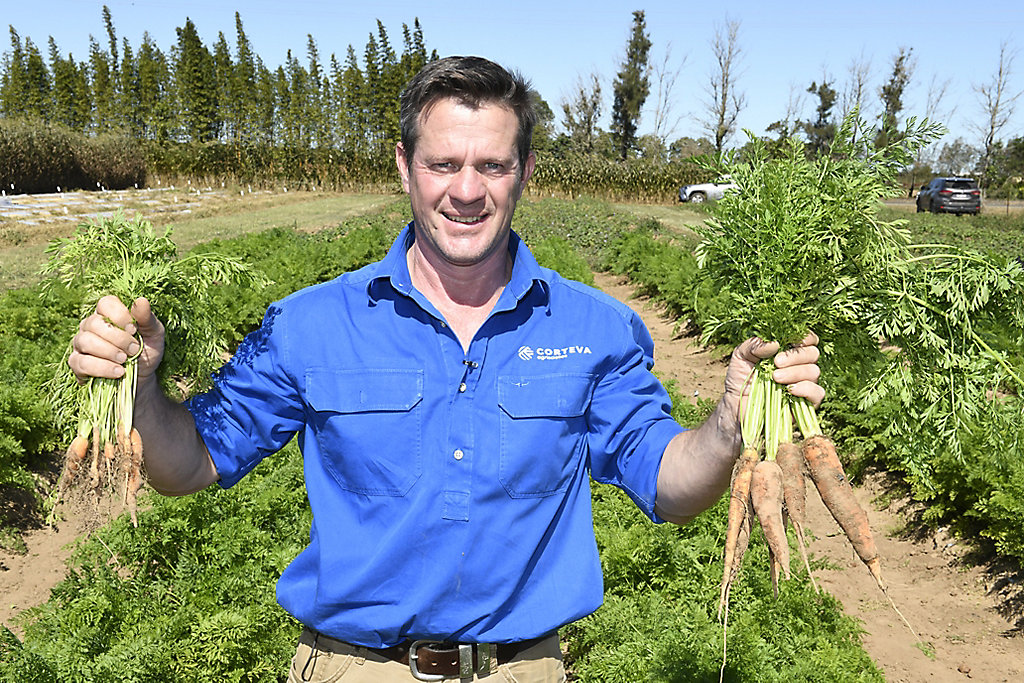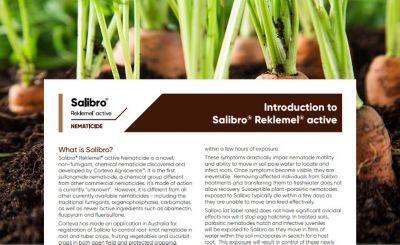Corteva Agriscience Salibro product manager, Dan Cornally, said nematode control options in the past have typically been quite disruptive to beneficial fauna contained in the soil.
“Nematode control can be very challenging, and many of the current options available to growers are not IPM friendly which results in significant disruption to soil beneficial organisms, they are also generally considered higher risk to growers and the environment.
“Salibro is quite different, it is much lower risk to applicators and the environment. It is also a very effective nematicide that controls root-knot nematode and has negligible impact on the beneficial species that help suppress pests and diseases for healthier soil.”
Mr Cornally said Salibro has a unique mode of action and can be used at relatively low rates.
“Salibro affects the co-ordination of the nematode, meaning they are unable to move, feed and infect plant roots within hours of treatment. Death will occur in a couple of days as nematodes cannot move or feed effectively.”
In treated soils, parasitic nematodes hatch and juveniles are exposed to Salibro as they move in films of water within the soil in search of a host root. This exposure will result in control of these newly emerged juveniles.
Soil temperature does not have any impact on the performance of Salibro and effective control is observed both at low and high soil temperatures, i.e. 4 to > 35 °C.
“Salibro will typically provide root protection from 20 to 50 days so is an excellent option for growers needing effective robust control of root-knot nematodes.”
Mr Cornally said Salibro offers excellent flexibility in terms of application timing and methods.
The approved use patterns are:
- At crop establishment through drip from three days before planting up to three days after transplanting depending on the crop.
- As a bed or furrow spray incorporated mechanically or with irrigation up to three days before planting.
- Split application through drip – applied at establishment and again 14 - 28 days after transplanting depending on the crop.
- Post plant drip as a top up treatment following another registered nematicide treatment.



